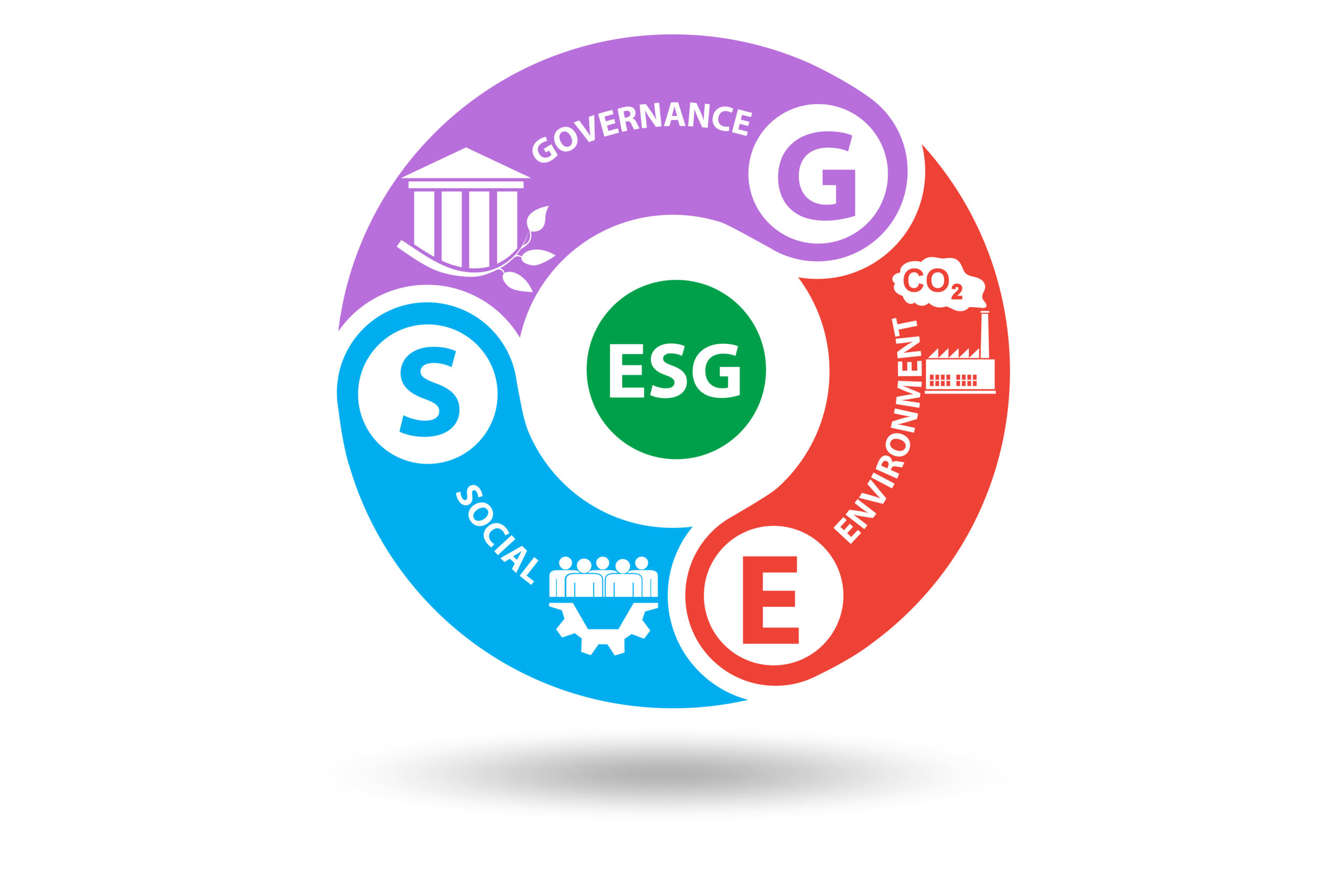ESG investing is an investment strategy that seeks to reduce risk by incorporating environmental, social and governance (ESG) risks into a portfolio. The ESG movement has become a popular way to invest in the market and can be used as an effective tool for investors to gain exposure to these issues.
The idea of investing based on ESG principles has been around for a long time; however, it is only recently that this concept has gained mainstream acceptance. There are now many financial advisors who specialize in ESG-based investing strategies.
This article aims to provide some insight into what ESG investing is and how it can benefit you as an investor.
What Is Environmental, Social, and Governance Investing?
ESG Investments is an investment framework focusing on environmental, social, and governance factors to generate long-term sustainable value. It is a kind of impact investing that has gained popularity in recent years as more investors are interested in supporting companies that align with their values.
The goal of ESG investing is to impact the world while generating financial returns positively. ESG factors are used to screen and select investments and to measure and monitor the performance of companies and funds. There are many benefits of ESG investing, including the potential to generate higher returns, reduce risk, and positively impact society.
Read also Maximizing Returns with Low Risk Investments.
How Does ESG Investing Works
Investors have, in recent years, shown interest in putting their money where their values are. Brokerage firms and mutual fund companies have responded by introducing exchange-traded funds (ETFs) and other financial products that follow ESG investing strategies.
Younger investors have been attracted to ESG-themed offerings by Robo advisor such as Betterment and Wealth front. Many large institutional investors, including pension funds, make good investment choices according to ESG factors.
As of 2020, ESG investors had $17.1 trillion in assets picked according to environmental, social, and governance principles, up from $12 trillion in 2020. Recent research shows that AUM for ESG-specific mutual funds and ETFs reached $400 billion in 2021, an increase of 33% from the previous year.
An ESG investment is also called a sustainable investment, a responsible investment, an impact investment, or a socially responsible investing (SRI). Investors examine a company’s policies and behaviors in terms of ESG criteria.
What Are ESG Investment Criteria?

ESG investment criteria are qualitative and quantitative factors that determine the success of an investment, including environmental, social, and governance (ESG) factors. ESG investment criteria are qualitative and quantitative factors that determine the success of an investment. They include:
Environmental sustainability is how well an investment protects the environment for future generations. How does it impact natural resources? Is it contributing to climate change? For example, investors may consider a company with a significant greenhouse gas emissions footprint unsustainable.
Social responsibility is how well an investment supports workers and communities in developed and developing countries. Does it put profit over people? For instance, a company that pays its employees poorly could be socially irresponsible.
Governance is how well an investment is managed, including corporate governance practices such as board diversity and disclosure policies. Does it support accountability and transparency? For example, a company with a significant disparity between CEO pay compared to average workers’ wages may be considered bad governance ESG investing by investors.
Why invest using ESG criteria?
In addition to performance, investing sustainably has many other benefits. Many investors view it as a means to improve investment returns; others view it as a way to adhere to their beliefs or values. For example, it may be socially objectionable for an investor to invest in alcohol, tobacco, or gambling.
We see ESG as a strategy that can:
Improve performance in select situations:
Investors with strong ESG criteria may be able to earn higher returns than those without such an approach. It is because some companies with poor ESG records outperform their peers who do not have such standards in place.
For example, if you are looking for a company that does business in countries with high levels of corruption (for example), you might choose one that adheres to strict anti-corruption standards.
In this case, the company will have good growth potential and less risk because its business model is more transparent than others. It could mean lower volatility and better risk-adjusted returns over time compared to other companies in the same industry that do not follow similar policies.
Reduce the volatility of a portfolio:
Sustainable investing strategies help you find companies doing good things for society and their bottom line (i.e., having positive earnings per share). Investors who use sustainable investing strategies tend to have lower equity volatility than those who don’t use sustainable investing strategies at all.
Types of ESG investments
ESG investments come in many forms, but here are some of the most popular.
ESG stocks
Most investors shouldn’t hold more than a small number of individual best stocks in their portfolio, but if you like a company (and think its stock will perform well over time), you may want to invest in it.
The impact report highlights some companies’ sustainability initiatives and carbon emissions management practices. A third-party site such as Glassdoor can provide information on a company’s work environment. Revenue and net income are also critical factors.
We can find some companies to invest in:
- Microsoft (NASDAQ:MSFT)
- Nvidia (NASDAQ:NVDA)
- Adobe (NASDAQ:ADBE)
- Lucid (NASDAQ: LCID)
- Best Buy (NYSE:BBY)
- Intuit (NASDAQ:INTU)
ESG mutual funds
ESG Funds can diversify your portfolio instantly and fill out your portfolio quickly. In recent years, traditional funds have exploded. The number of open-end and exchange-traded funds increased from 270 in 2018 to 303 in 2019.
It is possible to customize your portfolio’s impact area by investing in ESG funds focusing on particular issues. To compare mutual funds’ ESG ratings, check your broker’s mutual fund screening tool.
Investing in a fund requires you to read its prospectus to learn more about it, including what companies it invests in. It will also contain other helpful information, such as the fund’s expense ratio. An expense ratio is a percentage of the investment. With a mutual fund calculator, you can estimate the cost of purchasing a fund.
7 ESG Investment Strategies To Consider

Portfolios should consider seven key strategies when considering ESG factors. Due to its relative youth, sustainable investing doesn’t yet have standardized methodologies for considering these factors, so select those that align with your goals, motivations, and processes.
Negative Screening
An exclusionary screening process, also known as negative screening, excludes certain companies or sectors. A set of exclusion criteria is defined upfront based on a specific objective. Explicitly exclude fossil fuels companies from your portfolio if you want to reduce climate change’s impact.
Positive Screening
Investing in top-performing companies from defined industries is referred to as positive screening. It is a negative screening. The top performers aren’t selected based on the criteria you specify but rather according to performance measures. If you’re looking for a low-carbon footprint company, invest in the top 10 apparel or appliance companies.
Portfolio Tilt
In an investment portfolio tilt strategy, investors maintain sector weights that match a target index while tilting investment ratios to favor ESG investments more than non-ESG investments. For instance, a tilt strategy selects investments across the Russell 3000 index to maintain the same risk level.
Prioritize low-rated companies alongside ESG metrics. A low-risk strategy focused on ESG. Positive screening improves ESG but does not cover many industries.
ESG Integration
A portfolio’s return can be increased by integrating ESG factors into investment opportunities. It embeds ESG considerations into existing investment processes, not just defining a specific set of requirements. Another factor that contributes to the return on investment is this. Depending on how you implement this strategy, you may also have to update your procedures to consider ESG factors.
Shareholder Action
Investing in companies that pursue material ESG opportunities is shareholder action, which can also be called engagement. Investing in ESG leads to stronger business resilience, competitive strength, and financial performance, according to Harvard Law School Forum on Corporate Governance research. You can enhance your returns by advocating for ESG initiatives.
Activist Investing
The concept of activist investing involves buying equity in companies to influence their ESG policies. Shareholder action and activism are often referred to as “shareholder activism.” As opposed to activist investing, shareholder activism involves investing in companies with which the shareholder already owns shares.
Sustainability-Themed Investing
Sustainable-themed investing involves investing in indexes that address a particular issue relating to sustainability. If you’re looking for waste management for the planet, identify companies with impeccable waste management. Instead of selecting the top performers like positive screening. Sustainability-themed ESG investing focuses on environmental concerns, while positive screening is applied to all ESG factors.
What are the benefits of ESG investing?

Reduced Risk
Many ESG investors seek to avoid companies with questionable practices or irresponsible behavior. These companies might have a higher rate of failure, which means that when you come to sell their stock, its price will be lower. It isn’t a good sign for your investment strategy, as you will be forced to charge a lower price.
It is essential to focus on responsible investing in reducing the chance of losing money on your investments if you want to reduce the risk.
Lower Costs
In many cases, fees are one of the most important factors to consider when it comes to making investment decisions. Sustainability has proven to be a highly effective and cost-effective method of doing business over the years because companies who follow sustainable business practices don’t require massive advertising campaigns to boost sales, or spending large sums of money on luxury items for their top executives can be very costly. As a result, the company’s costs are lower, making it more profitable.
Better Returns
Historically, ESG investments have resulted in higher returns over the long term than traditional investments. The reason why? When investing their money, an individual who avoids investing in companies with dubious business practices is more likely to be confident when investing in other companies.
Therefore, shareholders will experience lower downside risk. ESG focus leads to high returns. Having a higher probability of success in their investments means they are more likely to receive a higher return when they decide to sell their investment. It gives you a chance to make back some or all of the money you invested when you first purchased and sold the stock.
Market Outperformance
The reputation, market share, profit, and revenue growth prospects of companies focused on sustainable business practices often outperform their competitors over the years. In addition to reinvesting their earnings into their company, many also do this to increase the amount of money their investors make over time, which is something every investor wishes for.
Since investors are concerned about the world’s future, they place their trust in companies with suitable corporate structures since they believe these companies will be sustainable over time.
Sustainable business practices improve efficiency and cost-effectiveness over time because they don’t have to spend a lot of money on advertising to boost sales, nor does it require expensive luxury items for executives to boost performance.
Conclusion
ESG companies are still businesses responsible for turning a profit when investing in them, as far as you are concerned. Therefore, assessing their past performance regarding stakeholder returns is equally important. Although practices like hydraulic fracturing can pose environmental concerns, some things can be done to improve them in the long run.
Social, environmental, and governance aspects serve as the foundation for ESG investing, which combines the pursuit of profitable investments with a focus on extending social impact over time. Even though some sectors carry a higher degree of risk than others, recent studies have shown that environmental constraints positively impact financial performance over the long term. A new industry, ESG investing, needs more research to determine its full impact. However, learning to invest in ESG companies may be the best course of action if you want access to an industry that will only grow larger over time.


